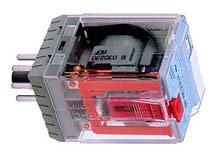Understanding the General Purpose of Non-Latching Relay
Introduction
A relay is an electrical component that switches a high power load on or off in response to a low power control signal. There are two types of relays: latching and non-latching. In this article, we will explore the general purpose of non-latching relays and why they are used in various applications.

What is a Non-Latching Relay?
A non-latching relay is a type of electrical relay that operates based on a continuous input signal. It is designed to switch the output circuit to either the “on” or “off” state as long as the input signal is present. Non-latching relays are commonly used in applications where a momentary signal is required to control an electrical device, or where a sustained signal is needed to maintain a particular circuit state.
General Purpose of Non-Latching Relay
Non-latching relays have several general purposes, some of which are discussed below:
- Power switching: Non-latching relays are often used to switch high power loads, such as motors, fans, and solenoids. The relay’s contacts can handle the high current and voltage required by these devices, while the control signal can be a low-power signal from a sensor, switch, or other control device.
- Control circuit protection: Non-latching relays can also be used to protect control circuits from high voltage or current surges. For example, if a high voltage surge occurs in a control circuit, the non-latching relay can be designed to switch off the power to the load, protecting the control circuit components.
- Signal amplification: Non-latching relays can be used to amplify signals, which is useful in applications where a low-level signal needs to be boosted before it can control a device. The relay’s contacts can provide the necessary current and voltage to the load, amplifying the signal from a low-level control device.
- Sequencing control: Non-latching relays are commonly used to sequence the operation of multiple devices in a particular order. For example, in a production line, several machines may need to operate in a specific sequence to produce a finished product. Non-latching relays can be used to control the timing of each machine’s operation, ensuring that they operate in the correct order.
- Fault detection: Non-latching relays can be used to detect faults in a circuit. For example, if a motor fails to start or stops during operation, the relay can be designed to switch off the power to the motor, preventing further damage to the motor or the rest of the circuit.

Advantages of Non-Latching Relay
Non-latching relays have several advantages over other types of relays, some of which are discussed below:
- Low power consumption: Non-latching relays use very little power to operate, which is an advantage in applications where power consumption is a concern.
- Easy to control: Non-latching relays are easy to control and can be switched on or off with a low-power control signal, such as a switch, sensor, or other control device.
- High reliability: Non-latching relays are known for their high reliability and long service life. They are designed to withstand high voltage and current loads and can operate in harsh environments.
- Low cost: Non-latching relays are generally less expensive than latching relays, making them a cost-effective solution for many applications.
Conclusion
Non-latching relays are a type of electrical relay that operates based on a continuous input signal. They have several general purposes, including power switching, control circuit protection, signal amplification, sequencing control, and fault detection. Non-latching relays offer several advantages over other types of relays, including low power consumption,




